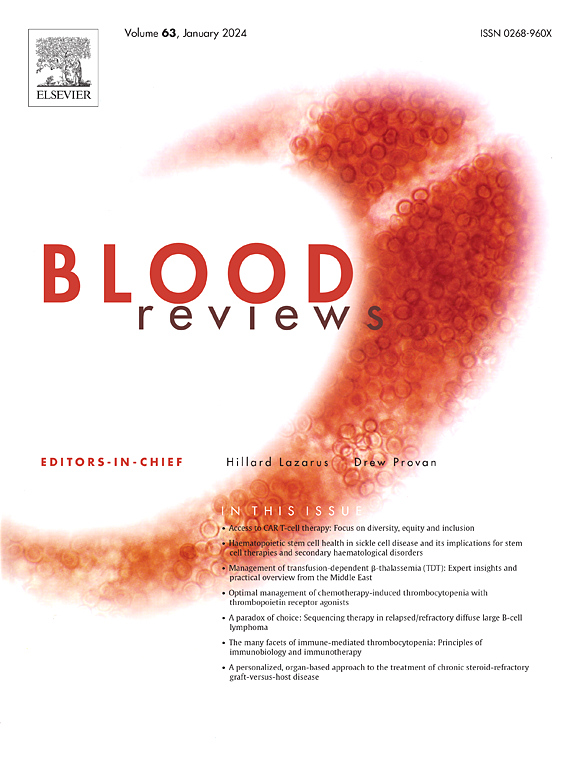引导急性髓系白血病走向更好的结局:不适合强化化疗的患者的治疗途径和挑战。
IF 5.7
2区 医学
Q1 HEMATOLOGY
引用次数: 0
摘要
急性髓性白血病(AML)是一种侵袭性血液系统恶性肿瘤,主要影响老年人。不适合接受强化标准化疗并合并/不合并造血干细胞移植的患者预后不佳。近年来,AML领域取得了重大进展,导致了新的抗白血病方法的发展,包括专门为不适合进行强化化疗的患者开发的低强度治疗。随着这类难以管理且历史上治疗不足的患者的可用选择越来越多,为每位患者选择最佳治疗方法至关重要,而且更具挑战性。因此,需要准确的患者评估来指导这一决策过程。目前对于如何评估患者的健康状况还没有达成共识,而最初为此目的开发的可用工具可能不适用于新的治疗方案。在这篇综述中,我们描述了目前不适合强化化疗的AML患者的管理,旨在强调当前的挑战,并提出准确治疗选择的可能策略。为此,我们将首先概述AML的流行病学和分类,然后转向当前针对不适合患者的抗白血病治疗以及用于评估患者是否适合特定治疗的工具。最后,我们将提出在新型低强度方案时代改善AML患者管理的可能措施。本文章由计算机程序翻译,如有差异,请以英文原文为准。
Navigating acute myeloid leukemia towards better outcomes: Treatment pathways and challenges for patients ineligible for intensive chemotherapy
Acute myeloid leukemia (AML) is an aggressive hematologic malignancy that affects primarily older individuals. Patients ineligible to receive intensive standard chemotherapy followed by consolidation with/without hematopoietic stem cell transplant have a suboptimal prognosis. In recent years, significant advances have been made in the AML field leading to the development of new anti-leukemic approaches, including lower-intensity therapies specifically developed for patients who are ineligible for intensive chemotherapy. As the available options for this hard-to-manage and historically undertreated patient category are increasing, selecting the best treatment for each patient is crucial and ever more challenging. Accordingly, accurate patient evaluation is required to guide this decision-making process. There is currently no consensus on how to evaluate patients' fitness status, and the available tools that were originally developed for this purpose might not be adequate in the setting of the new treatment options. In this review we describe current management of AML patients unfit for intensive chemotherapy, aiming to highlight current challenges and suggest possible strategies for an accurate therapeutic selection. For this purpose, we will first provide an overview of epidemiology and classification of AML, and then move to current anti-leukemic treatments for unfit patients and the tools used for evaluating patient eligibility for a specific treatment. Finally, we will suggest possible measures to improve the management of AML patients in the era of novel lower-intensity regimens.
求助全文
通过发布文献求助,成功后即可免费获取论文全文。
去求助
来源期刊

Blood Reviews
医学-血液学
CiteScore
13.80
自引率
1.40%
发文量
78
期刊介绍:
Blood Reviews, a highly regarded international journal, serves as a vital information hub, offering comprehensive evaluations of clinical practices and research insights from esteemed experts. Specially commissioned, peer-reviewed articles authored by leading researchers and practitioners ensure extensive global coverage across all sub-specialties of hematology.
 求助内容:
求助内容: 应助结果提醒方式:
应助结果提醒方式:


